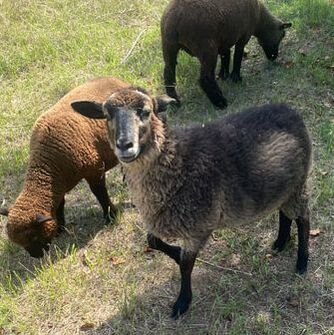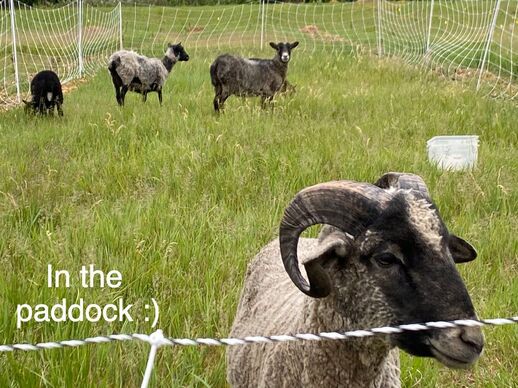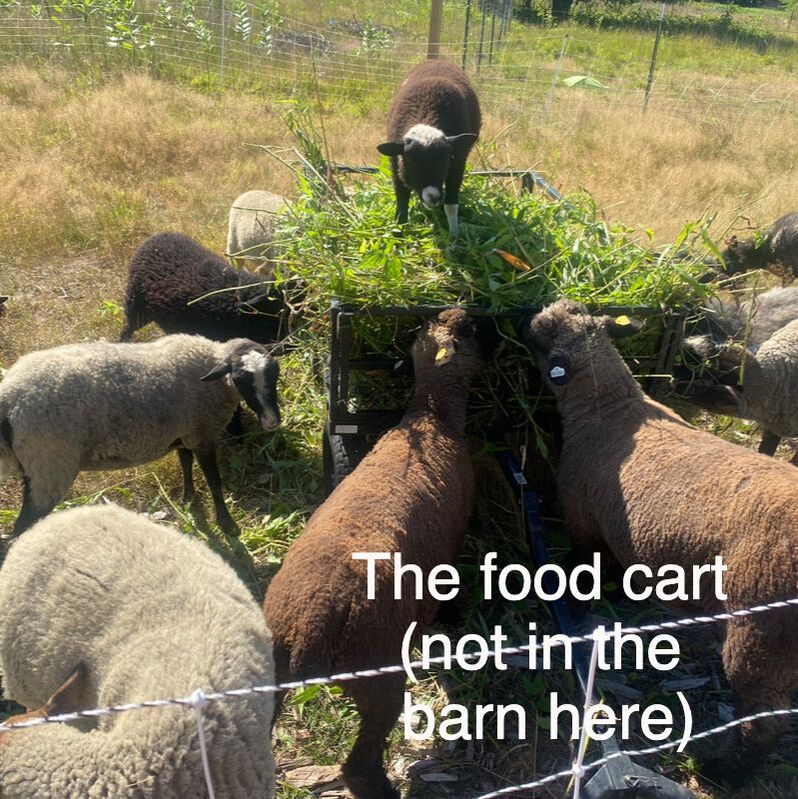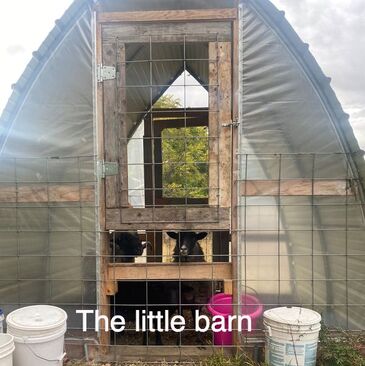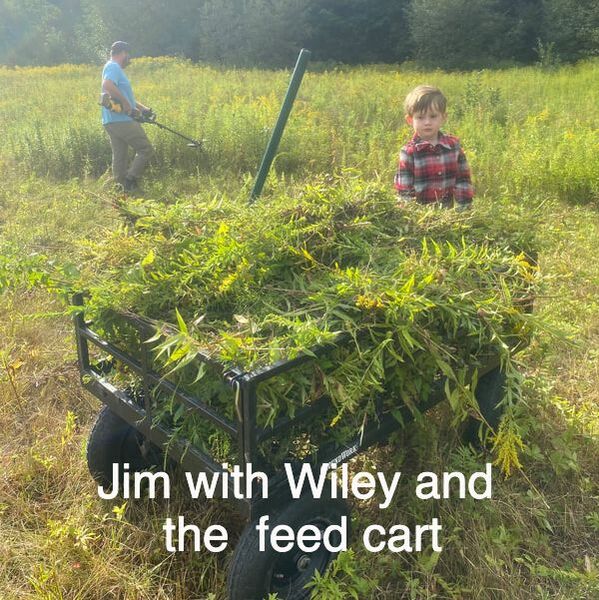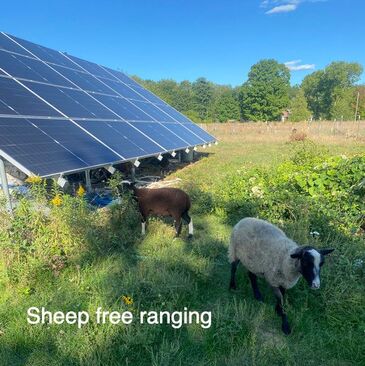Before we tell this story, two bits of background information to help the reader understand what we're doing. First, rotational grazing 101. This is when you move the animals around frequently (every day or 2-3 days), mimicking natural grazing behavior. A short, quick graze induces grass to send out more roots (putting more carbon in the soil) before growing back using the fertilizer left by the animals. Moving the animals also reduces the ability of poop parasites to spread (since poop can’t move and follow the sheep to their next paddock) keeping animals healthier. Farm luminaries like Allan Savory, Joel Salatin, and Gabe Brown (Dirt to Soil) practice it as a key to habitat restoration, carbon sequestration, improving soil, plant, and animal health, and with all that, the financial bottom line. We are really excited to try it and have sheep mainly with the intention to work with them to improve our sandy soils so we can grow big healthy nut trees and get CO2 out of the air. Second, electronics 101 (thanks to Mark). To get an electric current that will give a shock if an animal touches your fence, the electricity must be able to run in a circle. A common system is to have a solar charger with a positive and a negative pole, a fence with positive netting, and 1 to 3 metal grounding rods set 3-6’ into the ground. You connect the positive pole on the charger to a positive fence wire, and the negative pole to the metal rod. When nothing touches the fence, there is no current, because the electricity can’t run around. But, when an animal touches a positive wire, suddenly electric current can travel from the positive pole in the solar charger to the wire, through the animal, down its feet into the ground, through the ground back to the metal rod, and from there back to the negative pole. And voila, we have made a circle, or in electronic parlance, a circuit, which gives the animal a shock. Who knew earth can conduct an electric current? With that basic knowledge in hand, all you need is to learn how to set up and move the electric fence system around and how to get the sheep to go to the paddocks. Since I hadn’t the foggiest notion of either of these things, in 2021 I acquired a small library of sheep books and watched a couple zillion hours of you-tube videos on moving sheep and fences. Steve Gabriel (Silvopasture) had warned that there was a steep learning curve for putting up the netting without getting tangled, but we soon mastered it all and had our workaway guests doing it too.
Then one day in June, I got a call from Cori, who was staying with us and looking after the sheep while I was away for a few days. “The sheep are out!” She tried to catch them and chase them back to the barn, but sheep run faster than humans and it only resulted in very frustrated humans and totally panicked sheep. We later learned it works better just to let them do their thing for a while and eventually lure them home with some grain and a bucket. But from that time on, sheep escapes became a regular occurrence. We found out the sheep were escaping because there was no current in the electric fence, despite the charger, the ground rod and new fencing. We were stumped. Eventually, we learned that dry and/or sandy soil can’t conduct electricity to complete the circuit, and since we have sandy soil and were experiencing a drought, this was the likely cause. The solution is a positive-negative (PosNeg) fence. This is a fence that has both positive and negative strands, so that an electric circuit can be completed within the fence, bypassing the route via the earth and the ground rod. Mark jerry-rigged two of our fences into PosNeg ones and they served us well the rest of the summer. Another benefit was that we didn’t have to use the darn ground rods anymore either. Except for the crazy adventures when we added three new sheep to our flock (recounted here), all went well until in November, when the grazing was skimpy in the paddocks. Hungry, the sheep learned that at the end of the jerry-rigged PosNeg fence was a section that had no charge at all. Being clever sheep, they were soon leaving the paddock pretty much right after I had brought them there. Sigh! Well it was time to keep them in the barn on hay for the Winter anyway, so we let the fences rest for some months.
Below a little video of letting out the sheep with chutes. Comments are closed.
|
